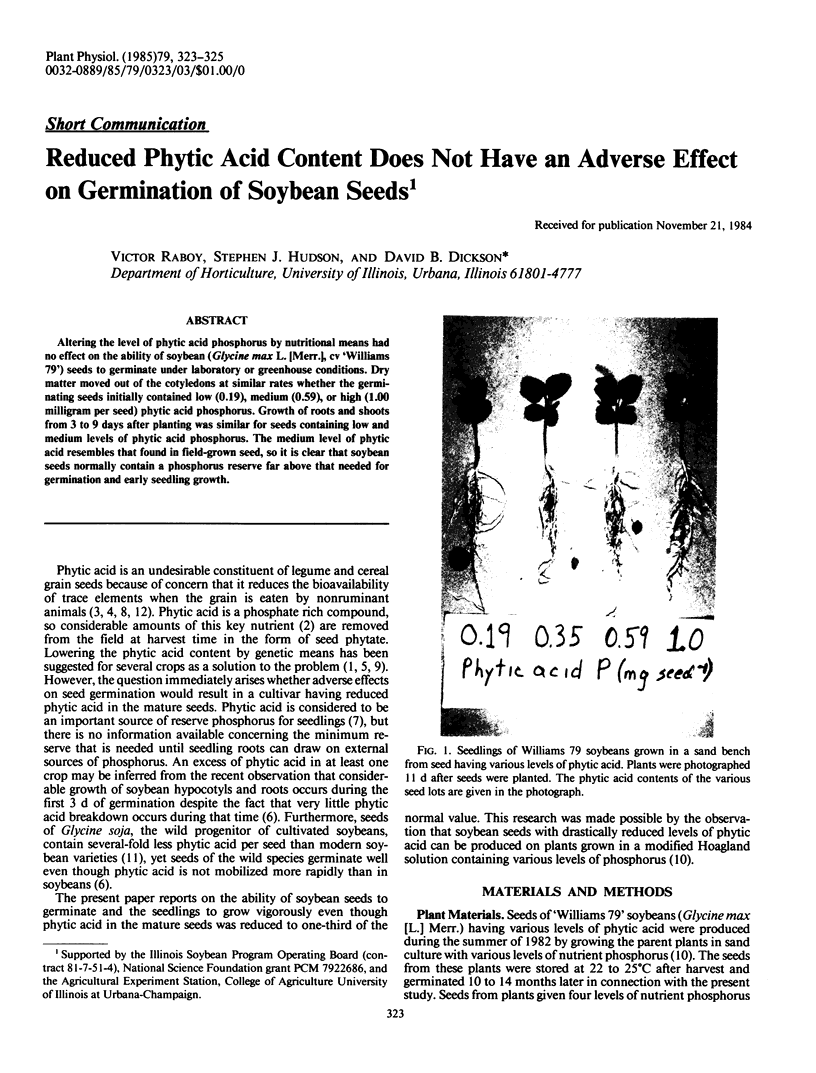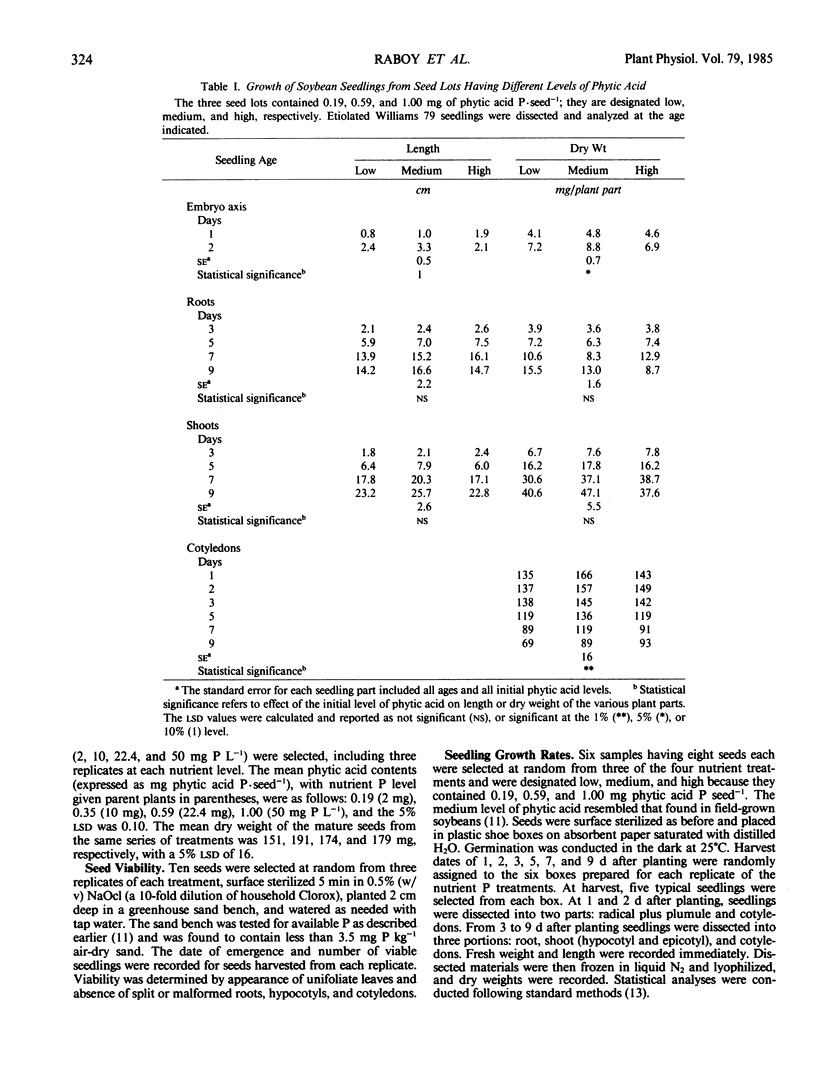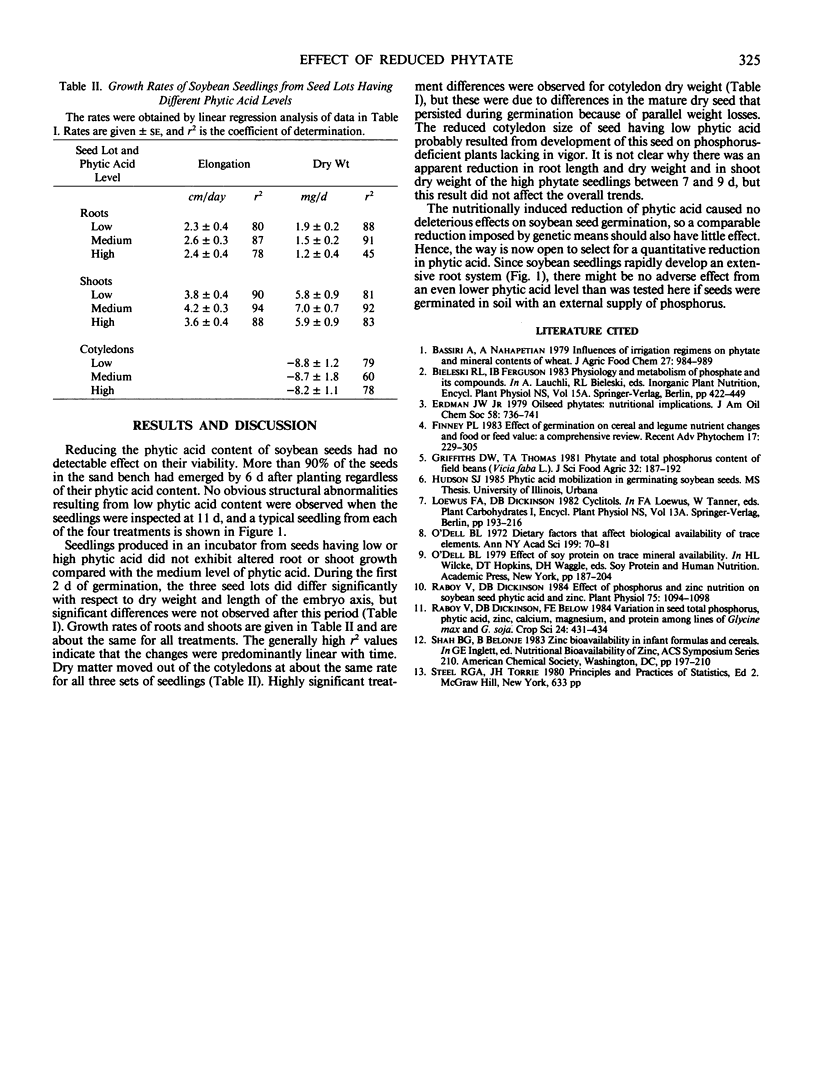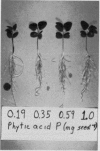Abstract
Altering the level of phytic acid phosphorus by nutritional means had no effect on the ability of soybean (Glycine max L. [Merr.], cv `Williams 79') seeds to germinate under laboratory or greenhouse conditions. Dry matter moved out of the cotyledons at similar rates whether the germinating seeds initially contained low (0.19), medium (0.59), or high (1.00 milligram per seed) phytic acid phosphorus. Growth of roots and shoots from 3 to 9 days after planting was similar for seeds containing low and medium levels of phytic acid phosphorus. The medium level of phytic acid resembles that found in field-grown seed, so it is clear that soybean seeds normally contain a phosphorus reserve far above that needed for germination and early seedling growth.
Full text
PDF


Images in this article
Selected References
These references are in PubMed. This may not be the complete list of references from this article.
- Bassiri A., Nahapetian A. Influences of irrigation regimens on phytate and mineral contents of wheat grain and estimates of genetic parameters. J Agric Food Chem. 1979 Sep-Oct;27(5):984–989. doi: 10.1021/jf60225a052. [DOI] [PubMed] [Google Scholar]
- O'Dell B. L. Dietary factors that affect biological availability of trace elements. Ann N Y Acad Sci. 1972 Jun 28;199:70–81. doi: 10.1111/j.1749-6632.1972.tb46444.x. [DOI] [PubMed] [Google Scholar]
- Raboy V., Dickinson D. B. Effect of phosphorus and zinc nutrition on soybean seed phytic Acid and zinc. Plant Physiol. 1984 Aug;75(4):1094–1098. doi: 10.1104/pp.75.4.1094. [DOI] [PMC free article] [PubMed] [Google Scholar]



